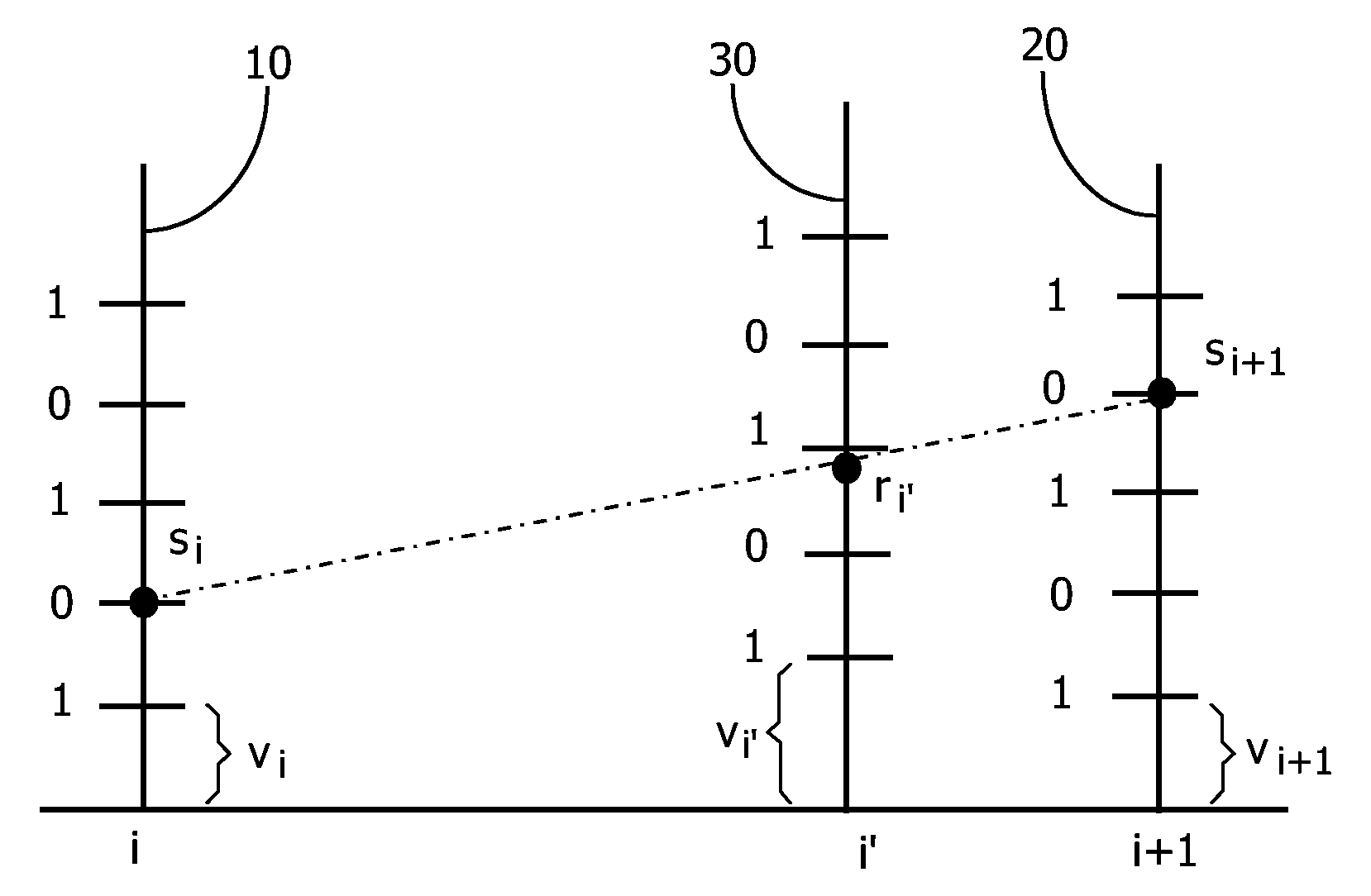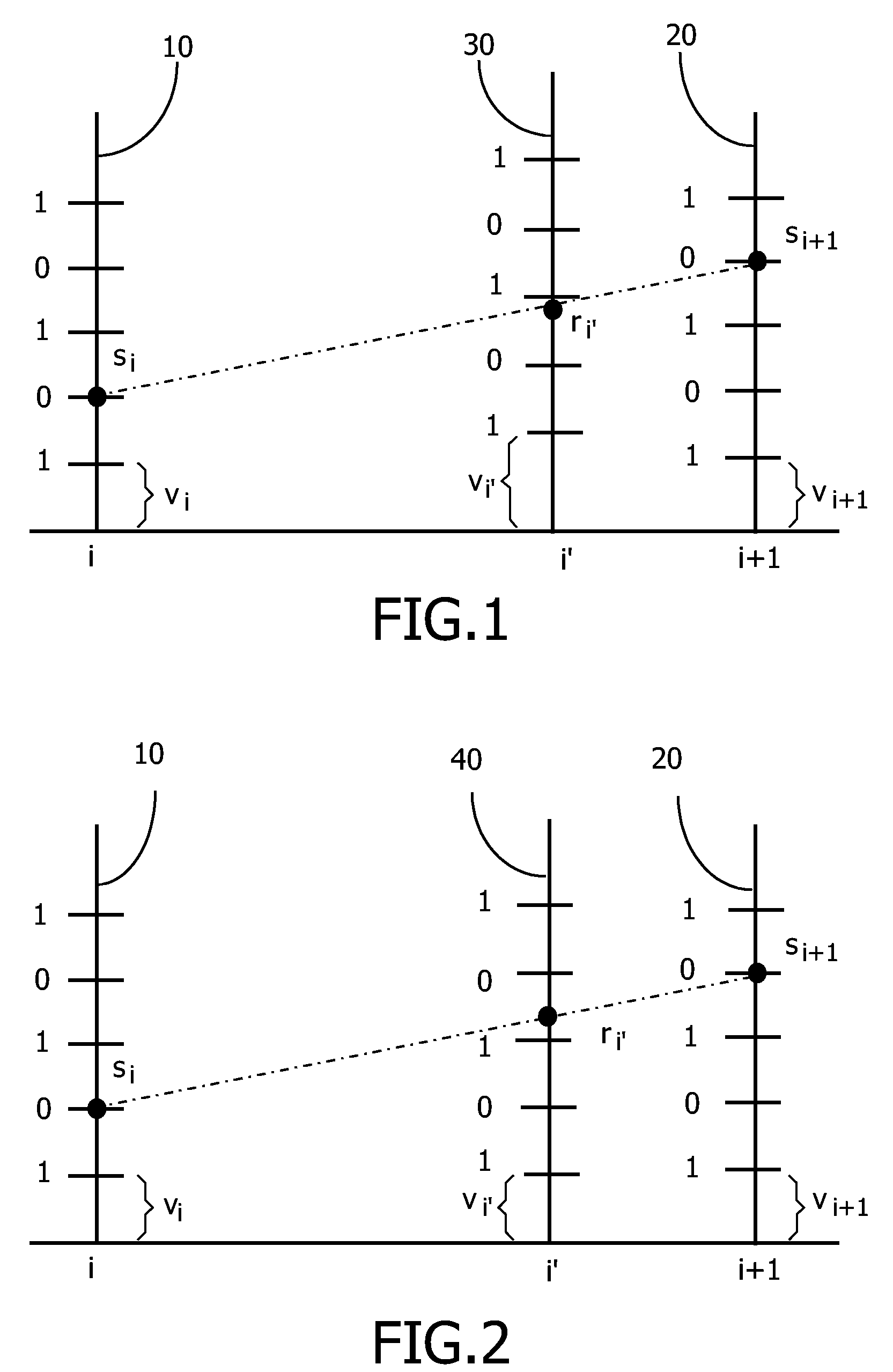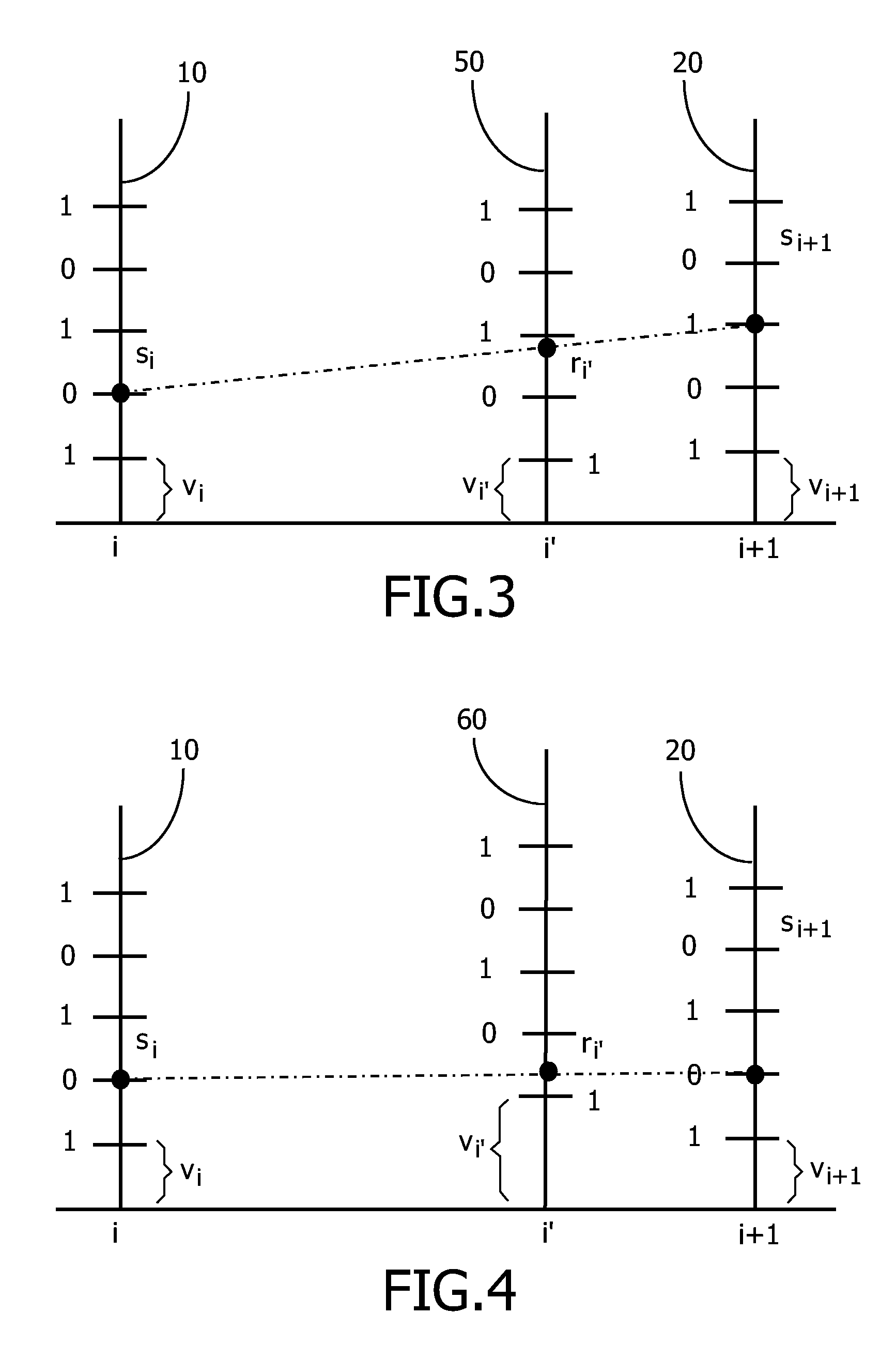Method of Quantization-Watermarking
a technology of audiovisual objects and quantization, applied in the field of quantization watermarking audiovisual objects, can solve the problems of insufficient robustness of qim-like watermarking schemes to deliberate practical attack, and the scheme is found in practice to be vulnerable to practical attack, so as to achieve the effect of more robust to practical attack
- Summary
- Abstract
- Description
- Claims
- Application Information
AI Technical Summary
Benefits of technology
Problems solved by technology
Method used
Image
Examples
Embodiment Construction
[0030]In order to describe embodiments of the present invention in context, three established general approaches to render a watermark more resistant to geometric changes will firstly be elucidated.
[0031]In a first established approach to watermarking audio-visual objects known as “autocorrelation”, a watermark signal employed for watermarking an audio-visual object has a known autocorrelation. When such a watermark signal is added to the audio-visual object, scaling the resulting watermarked audio-visual object results in the autocorrelation function of the watermark signal included in the object being correspondingly deformed. When watermark detection is executed, an autocorrelation of the embedded watermark signal is estimated from the watermarked audio-visual object. The estimate of the autocorrelation function is compared to the known version of the autocorrelation function of the embedded watermark. From this comparison, it is possible to determine any deformation that may hav...
PUM
 Login to View More
Login to View More Abstract
Description
Claims
Application Information
 Login to View More
Login to View More - R&D
- Intellectual Property
- Life Sciences
- Materials
- Tech Scout
- Unparalleled Data Quality
- Higher Quality Content
- 60% Fewer Hallucinations
Browse by: Latest US Patents, China's latest patents, Technical Efficacy Thesaurus, Application Domain, Technology Topic, Popular Technical Reports.
© 2025 PatSnap. All rights reserved.Legal|Privacy policy|Modern Slavery Act Transparency Statement|Sitemap|About US| Contact US: help@patsnap.com



